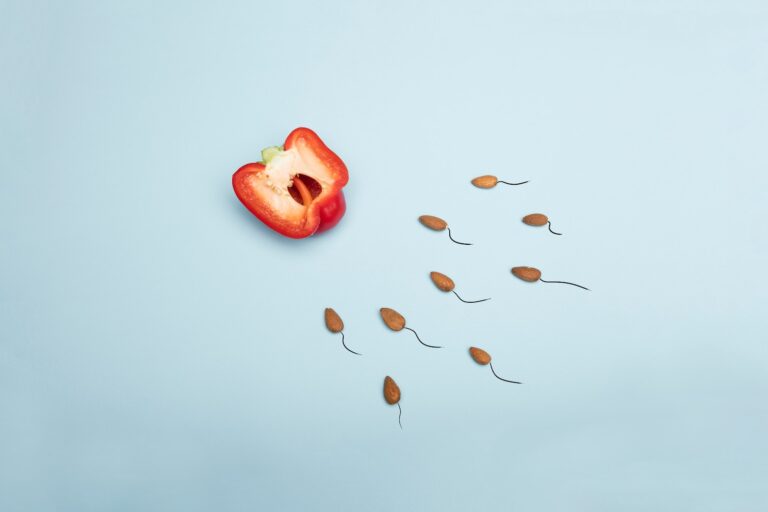Egg cells, also called oocytes, are the largest single cell in our bodies. They are created in the ovaries and released once a month during ovulation.
Egg cells contain stockpiles of all the materials and nutrients required to grow a new embryo and support a developing zygote until implantation takes place.
Why Are Egg Cells Larger Than Sperm Cells?
During sexual intercourse, sperm cells enter the female reproductive system where they are able to fertilize egg cells and create a new life. The difference in size between the egg and sperm cell is crucial for this process. The larger egg cell allows for a greater surface area to bind with sperm and allow for the storage of nutrients that will be used in the fertilized embryo.
In addition, the large size of the egg cell allows for the formation of cortical granules that line the egg and help to ensure only one sperm can fertilize the egg. This is important as sperm are released in huge numbers and have to compete with hundreds of millions of other sperm for the chance to fertilize an egg. The large egg cell also helps in this competition by allowing the production of chemical signals that bind with receptors on the sperm cells, known as sperm chemoattractants.
Another reason for the large size of egg cells is that they have to be able to accumulate enough chromosomes to produce a fertilized embryo after the cellular division process known as meiosis. This is why egg cells, or oocytes, contain the full set of 23 chromosomes.
How Are Egg Cells Different From Sperm Cells?
Researchers haven’t been able to produce egg cells outside the body until recently. Until then, they could only transform human stem cells into precursors of egg cell called primordial germ cells (PGCs). These haven’t undergone the chromosome-halving process of meiosis, so they can’t be fertilized. But last month, a team at Kyoto University led by Mitinori Saitou reported that they have managed to advance human PGCs to the next stage of egg cell development, called oocytes.
Oocytes and sperm cells are known as gametes. Both are the reproductive cells of vertebrates that contain half the genetic information needed to make a complete organism. Eggs develop in the ovaries of females and sperm form in the testicles of males. When a sperm and an egg fuse, the result is a zygote, which has all the genetic information it needs to become a fully grown human being.
Both egg and sperm start as diploid parent cells, but they undergo a process of meiosis to produce four haploid gametes. In humans, oocytes are stored in the ovaries and sperm are released from the testicles into the Fallopian tubes where they will fertilize an egg. Gametes carry a mix of genes from both parents, but only the egg and sperm cells have the female-specific mitochondria, structures that convert oxygen and nutrients into energy for cell growth.
Why Are Sperm Cells Smaller Than Egg Cells?
Sperm cells are designed for mobility and have a long tail that propels them towards the egg. They also contain a large amount of cytoplasm, which provides the nutrients needed for fertilization to take place.
Egg cells, on the other hand, are much larger than sperm cells. This is because they have to harbor all of the materials and nutrients that will be necessary for a fertilized embryo to grow.
During ovulation, the egg cell becomes much larger than normal, and it is during this time that a sperm cell will begin to cling to the egg. The two cells will be in contact for about half an hour, and they then fuse together to form a diploid organism with 46 chromosomes.
This process is known as fertilization, and it is the process that gives us children. In order for fertilization to occur, the sperm cell must first penetrate the outer layer of the egg cell, which is protected by a thick layer called the zona pellucida.
Hundreds of millions of sperm cells vie for the chance to penetrate the egg and fertilize it. In order to have the best chance of doing this, sperm cells are streamlined in design and made up of three parts: the head, midpiece, and tail. The head of a sperm cell is covered by a cap-like structure called an acrosome, which contains enzymes that help the sperm cell penetrate the egg. The midpiece of a sperm cell contains mitochondria, which provide the energy to power the sperm’s movement. The tail of a sperm cell is referred to as a flagellum, and it helps the sperm move forward in a whip-like motion.
What Are the Differences Between Egg Cells and Sperm Cells?
Egg cells, also known as oocytes or ova, are the largest cells in the human body and produce an embryo after fertilization. The oocyte has a large amount of cytoplasm that contains important nutrients and organelles, including mitochondria, which provide energy. These nutrients and organelles are essential for the growth of the embryo. The large size of the oocyte allows it to store a great deal of genetic information and can lead to greater genetic diversity in offspring.
Sperm cells, on the other hand, are smaller and designed for mobility. They have a long tail that propels them towards the egg cell during fertilization. Sperm cells have a very small nucleus, with the majority of their genetic material residing in the cytoplasm. They contain half the number of chromosomes found in a normal cell, with 23 chromosomes in total.
The formation of sperm and egg cells is a complex process that requires careful coordination between the reproductive system and the environment. In particular, the size of egg and sperm cells can be impacted by temperature, which influences how fast and efficiently they are able to fertilize an embryo. In addition, the oocyte’s outer layer can produce chemical signals that bind to specific receptors on the surface of sperm cells and help ensure successful fertilization.
See Also:






